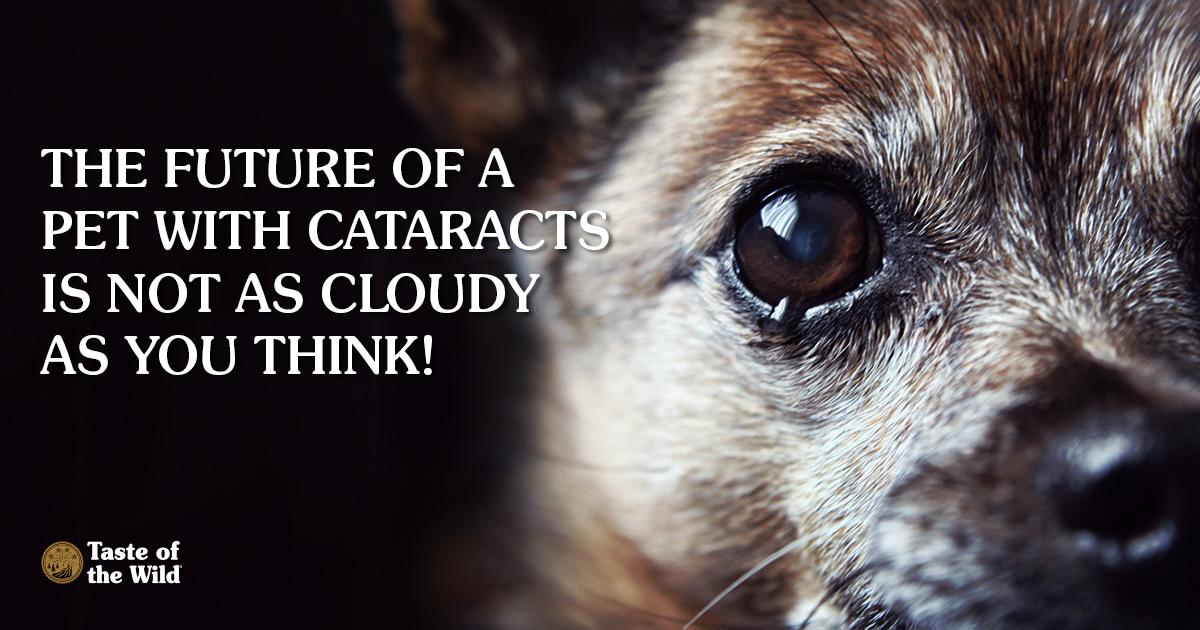 Have you noticed that your older pet has a haziness at the center of his or her eyes? Most people might fear that it’s cataracts. The good news is that it’s much more likely to be nuclear sclerosis, a normal condition in aging cats and dogs in which the lens of the eye becomes cloudy. And since this condition generally doesn’t have much effect on vision, no treatment is needed.
Have you noticed that your older pet has a haziness at the center of his or her eyes? Most people might fear that it’s cataracts. The good news is that it’s much more likely to be nuclear sclerosis, a normal condition in aging cats and dogs in which the lens of the eye becomes cloudy. And since this condition generally doesn’t have much effect on vision, no treatment is needed.
The trouble is, a cataract is very similar to nuclear sclerosis: the normally black area seen through the pupil can appear cloudy or milky. But cataracts may lead to vision impairment and eventually blindness. Most people can’t tell the difference, so schedule an appointment with your veterinarian to find out for sure.
What Is a Cataract?
Normally, the lens is a clear structure located behind the iris, the colored part of the eye. When light enters the pupil, the lens focuses it on the retina, the lining at the back of the eye responsible for vision. As a cataract develops and gradually makes the lens opaque, it’s more difficult for light to reach the retina, leading to a loss in vision. Cataracts can affect one or both eyes.
What Causes Cataracts?
Although cats can develop cataracts too, this condition tends to occur more in dogs. In many cases, cataracts are hereditary and appear when dogs are young to middle aged. Cataracts can also be a common complication of canine diabetes. Other causes include trauma, infectious diseases, inflammation, nutritional deficiencies and toxins. Sometimes, no obvious cause can be detected.
Pinpointing a Diagnosis
To determine if your pet has cataracts, your veterinarian will perform an eye exam. The doctor may also suggest other tests, such as blood work, to see if there are underlying conditions (including diabetes) that contribute to the development of cataracts. Even if these underlying conditions are treated or managed, the changes in the lens — and vision loss — are irreversible without surgery.
Living With Vision Loss
If your pet has a cataract in only one eye, he or she may be able to get around just fine using the vision in the other eye. Even if both eyes are affected, many pets adapt to blindness well.
Pets with cataracts should have their eyes monitored by a veterinarian, however, because the condition can lead to other problems. These include uveitis, an inflammation of the eye tissue, and glaucoma, or high pressure in the eye, which is painful and may require eye removal. Your veterinarian may recommend eye drops to help reduce the risk of inflammation.
Surgery Can Often Restore Vision
Granted, it can be difficult to watch your pet bumping into walls and furniture. Thankfully, it may be possible for your pet to see again, with a surgical procedure similar to that performed in people with cataracts. This surgery, which has an 85 to 95 percent success rate in pets, may be the only option for restoring vision to the affected eye.
Your veterinarian will most likely refer you to a veterinary ophthalmologist (eye specialist) who will test your pet’s eye to make sure the retina functions properly and the rest of the eye is healthy.
Cataract surgery is performed under general anesthesia. In most cases, the surgeon will make a small incision in the eye. Using a tiny instrument, the surgeon can break up the cataract into small pieces with ultrasonic vibration and essentially vacuum those pieces out of the eye. The lens is then replaced with an artificial lens implant.
After surgery, your pet will typically need to wear a cone for two weeks to prevent any scratching or rubbing at the eye. The veterinarian will likely recommend eye drops for a few weeks, too.
Even so, you will probably notice a dramatic improvement in your pet’s vision soon after the surgery. That, of course, makes it harder for your pet to pretend he or she doesn’t see you when you ask who ate the ham sandwich off the counter.
RELATED POST: When Should My Pet Get an Eye Exam?
The information in this blog has been developed with our veterinarian and is designed to help educate pet parents. If you have questions or concerns about your pet's health or nutrition, please talk with your veterinarian.
